HIGHER EDUCATION INSTITUTIONS
Advance Research at Your Higher Education Institution.
Sponsor Foreign STEM Researchers at Your Institution
The STEM Research Initiative provides U.S. Higher Education Institutions with a reliable tool for sponsoring or hosting global experts in STEM fields.
With a goal of facilitating meaningful collaboration between academia and industry, this initiative enables foreign researchers to remain in the U.S. for up to five years—allowing them to advance research efforts at your institution, work in STEM fields at U.S.-based companies, and contribute to a stronger American innovation ecosystem. Whether you’re a university, college, or nonprofit, this initiative offers an exciting opportunity for driving innovation forward—on campus, in your local community, and across the nation.
Overview of STEM Research Initiative
STEM Research Initiative
From colleges and universities to nonprofit organizations, the STEM Research Initiative offers an easier way for American Higher Education Institutions to source, sponsor, and host talented foreign nationals involved in research and development from around the globe. Non-immigrant research scholars can legally remain in the U.S. for up to five years, staying at one institution for the entire duration or transferring their J-1 visa between multiple Higher Education Institutions, non-profit organizations, and U.S.-based companies.

Is My Institution or Eligible to Sponsor or Host Foreign STEM Researchers?
For the purposes of this initiative, eligibility is determined more by job function than specific job titles. For this reason, U.S.-based companies without official STEM classification can still qualify to participate in the program, as long as researchers’ roles fall into certain categories. Generally, positions in research and development, applied research, applied science, research roles that help generate new products or services, and similar will qualify.
Who Can Be Sponsored or Hosted Through the STEM Research Initiative?
This initiative is designed for non-immigrant foreign researchers and global experts in their respective fields, especially those interested in conducting STEM research, collaborating and exchanging ideas with their American peers, and advancing their professional prospects and network in the United States. While many participants hold master’s degrees or PhDs, foreign nationals with demonstrated expertise and a minimum of a bachelor’s degree are eligible to participate, including:
- Current J-1 Research Scholars
- Foreign nationals – R&D Experts
- F-1 Graduates
- Former Research Interns & Trainees
- Foreign employees/New hires in R&D
- Non-U.S. PhD Fellows
What Roles Can Researchers Be Sponsored or Hired For?
For the purposes of this initiative, eligibility is determined more by job function than specific job titles. For this reason, businesses without official STEM classification can still qualify to participate in the program, as long as researchers’ roles fall into certain categories. Generally, positions in research and development, applied research, applied science, research roles that help generate new products or services, and similar will qualify.
For more detailed information, review our FAQs.
How it Works

STEM Expert
U.S.-Based companies
Attorneys
Sponsor
HOSTING A RESEARCHER
SPONSORING A RESEARCHER
Hosting a Researcher
Participation Guide: How to Get Started
1 | Find a Research Candidate
In most instances, your current scholars, faculty, university partners, and/or team members will have suggestions on which global experts they want to bring on board. They are likely very familiar with other experts in their field of research through publications, research conferences, and other events. Occasionally, a foreign researcher may reach out to your institution or organization directly to express their interest. In addition, a matching platform is currently being built to match foreign researchers to relevant STEM research opportunities in the U.S. Once launched, this platform can help your institution or organization find qualified candidates directly.
2 | Reach out to one of our Sponsoring Organizations
Find a sponsor to work with on the application process and throughout the course of your researchers’ stay in the U.S. You can find a list of potential sponsors here.
3 | Prepare Paperwork & Apply for Visa
The sponsoring organization will work with you on what paperwork and documentation you’ll need to apply for the J-1 STEM Research Visa initiative.
4 | Map Out Logistics
- What is their timeline for bringing a foreign researcher(s) over to the U.S.? Do they have a desired start date in mind?
- What is their purpose for bringing over a foreign researcher? What will the researcher’s work be focused on?
- How will the researcher collaborate with their internal teams? Who will supervise their efforts?
- How will they compensate the foreign researcher: an hourly wage, bi-monthly salary, a stipend? How much can their organization afford to pay?
- What are their desired goals and outcomes for hosting a foreign researcher? What by what date?
- How will they measure progress?
5 | Ensure a Successful Start
Make a plan for pre- and post- arrival. Consider the following:
- What will the orientation process look like for your foreign STEM researcher?
- What will ensure a successful onboarding?
- Schedule a meeting to introduce your researcher to the rest of the team.
- Prepare a list of expectations and goals for the research engagement and ensure these are communicated clearly to your research.
6 | Collaborate with Sponsors on Ongoing Administration
Facilitate transfers to other academic Higher Education Institutions or employers.
Sponsoring a Researcher
Participation Guide: How to Get Started
1 | Find a Research Candidate
In most instances, your current scholars, faculty, and/or team members will have suggestions on which global experts they want to bring on board. They are likely very familiar with other experts in their field of research through publications, research conferences, and other events. Occasionally, a foreign researcher may reach out to your institution or organization directly to express their interest. In addition, a matching platform is currently being built to match foreign researchers to relevant STEM research opportunities in the U.S. Once launched, this platform can help your institution or organization find qualified candidates directly.
2 | Prepare Paperwork & Apply for Visa
The sponsoring organization will work with you on what paperwork and documentation you’ll need to apply for the J-1 STEM Research Visa initiative.
3 | Map Out Logistics
- What is their timeline for bringing a foreign researcher(s) over to the U.S.? Do they have a desired start date in mind?
- What is their purpose for bringing over a foreign researcher? What will the researcher’s work be focused on?
- How will the researcher collaborate with their internal teams? Who will supervise their efforts?
- How will they compensate the foreign researcher: an hourly wage, bi-monthly salary, a stipend? How much can their organization afford to pay?
- What are their desired goals and outcomes for hosting a foreign researcher? What by what date?
- How will they measure progress?
4 | Ensure a Successful Start
Make a plan for pre- and post- arrival. Consider the following:
- What will the orientation process look like for your foreign STEM researcher?
- What will ensure a successful onboarding?
- Schedule a meeting to introduce your researcher to the rest of the team.
- Prepare a list of expectations and goals for the research engagement and ensure these are communicated clearly to your research.
- Here are the steps listed from the same presentation (slightly different than the content from the BridgeUSA site posted in a comment above). [1]
5 | Manage Ongoing Administration
Facilitate transfers to other employers or academic Higher Ed Institutions

About the STEM Research Initiative
The STEM Researcher visa initiative is a collaboration between the U.S. Department of State, sponsoring organizations and U.S.-based companies electing to host foreign researchers at their organization. Developed in the White House Office of Technology and Innovation, the initiative was devised to make it easier for U.S.-based companies and institutions to tap into a diverse well of overseas talent and global perspectives. By nurturing collaboration between domestic and foreign researchers, it aims to advance innovation and accelerate STEM research in the U.S. and beyond
Learn moreFAQs for Higher Education Institutions
Want to read other user-specific FAQs?
What are the benefits for host organizations participating in the STEM Initiative?
This initiative aims to promote a global perspective for U.S.-based STEM businesses interested in transforming their operations with international exchange. This results in diversified teams, enhanced innovation, and enhanced and increased global network opportunities. Participating organizations may gain a competitive edge in our global economy with the perspectives and skillsets of international visitors, particularly in the STEM fields.Hosting an exchange visitor may build your organization’s international credibility, stature, and brand and positively affects the lives of future professionals across borders. This creates new networks and partnerships generally and strengthens existing ties within your networks.
What is a designated sponsor?
Sponsors are designated by the U.S. Department of State to conduct exchange visitor programs. There are approximately 1,450 private sector, academic, and federal, state, and local government entities currently designated as sponsors who conduct 15 categories of exchange programs. This includes the seven categories which are eligible to participate in the STEM Initiative: College and University Student (Student Intern and Academic Training), Intern, Trainee, Specialist, Short term Scholar, Professor or Research Scholar. Only Department-designated sponsors are authorized to issue the Certificate of Eligibility for Exchange Visitor Status (Form DS-2019), which is the document that permits a J-1 exchange visitor visa application. The Form DS-2019 identifies the exchange visitor, their sponsor, and provides a brief description of their exchange program, including the program start and end dates and exchange program category. On the BridgeUSA website, you can see a list of sponsors that have expressed interest in collaborating with STEM host organizations in the STEM Initiative, as well as a full list of Department-designated sponsors.
What is a host organization in the STEM Initiative?
Host organizations provide research, training, teaching or internship opportunities in the United States on behalf of a designated sponsor pursuant to an executed written agreement with the sponsor. Host organizations are where exchange visitors conducting training or research in a STEM-related field or industry are placed. Visit the BridgeUSA website, for additional information on host organizations.
What type of oversight is recommended for J-1 exchange visitors in the STEM Research Initiative categories?
As explained in the DOS guidance for Responsible Officers of designated programs, the program sponsor must ensure that STEM Initiative exchange visitors have a positive experience, paying close attention to their health and welfare while on program and providing appropriate orientations, oversight, and cross-cultural experiences. Regular check-ins (often but not exclusively by email) and a site visit (whether in person or by video) are essential to support program integrity.
Why would a school place a J-1 research scholar or other academic exchange visitor with an off-campus host? What are the benefits?
Providing off-campus opportunities will increase a university’s connection with STEM businesses in your community. Current trends in international education continue to show that exchange visitors are increasingly seeking professional development and hands-on experience in their chosen fields of research and study. STEM students and scholars are especially keen about practical research and training experience in their chosen fields.Providing skills-based training and research opportunities for your academic exchange visitors at STEM businesses increases your stature and competitiveness. This will help connect academic institutions and alumni with the business community. It establishes colleges and universities as a resource that brings innovative ideas and diverse perspectives to STEM businesses through the Exchange Visitor Program.Companies seeking to gain a competitive edge in our global economy with the perspectives and skillsets of exchange visitors, particularly in the STEM fields, will become a formal part of your institution’s network.This can assist in your marketing and recruitment outreach to future exchange visitors and attract more STEM-based exchanges to your institutions and communities. Establishing this pipeline can be a major draw and incentive to then attract future exchange visitors seeking these research and training opportunities in the United States.












